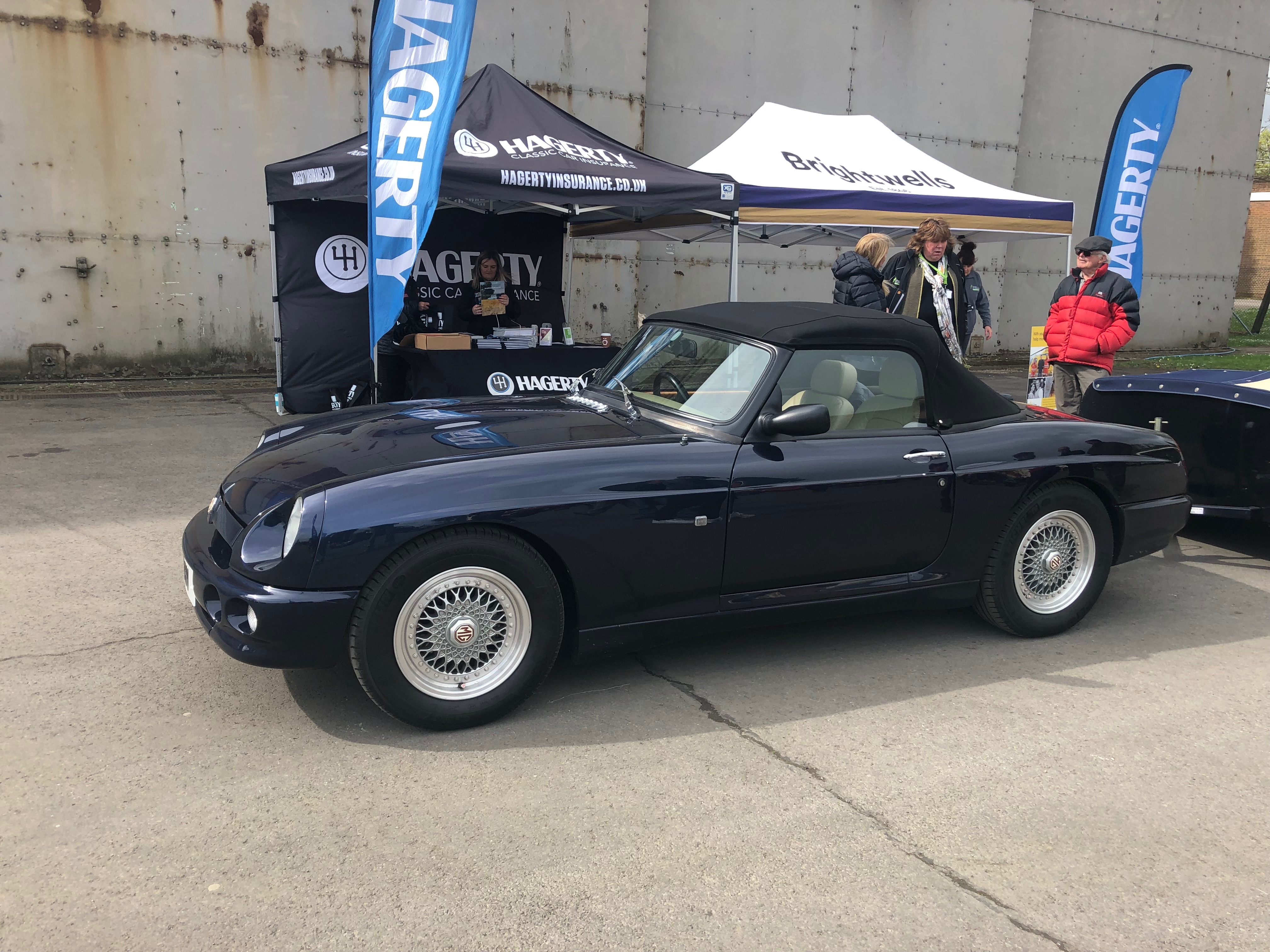-
Insurance
InsuranceAbout our productsLearn about insuringGet a quote Get current values, historical values, model history and more.
-
Valuation
ValuationHagerty valuation toolLook up a vehicle value Get current values, historical values, model history and more.
-
Events
EventsHagerty official eventsHagerty ClubhouseEvent calendar
-
Entertainment
EntertainmentMore to explore
- Portal login
1996 MG R-V8
Base Convertible 3.9 L
Vehicle values by condition
Fair
Condition 4
£11,300
#4 cars are daily drivers, with flaws visible to the naked eye. The chrome might have pitting or scratches, the windshield might be chipped.
Good
Condition 3
£15,700
#3 cars could possess some, but not all of the issues of a #4 car, but they will be balanced by other factors such as a fresh paint job or a new, correct interior.
Excellent
Condition 2
£23,800
#2 cars could win a local or regional show. They can be former #1 cars that have been driven or have aged. Seasoned observers will have to look closely for flaws.
Concours
Condition 1
£27,500
#1 vehicles are the best in the world. The visual image is of the best car, unmodified, in the right colours, driving onto the lawn at the finest concours.
Insurance premium for a
1996 MG R-V8 Base Convertible 3946
valued at £15,700
£375.01
/ year*
History of the 1993 - 1996 MG R-V8

1993 - 1996 MG R-V8
The Mazda MX-5 is said to be descended from the MGB, Triumph Spitfire – and particularly the Lotus Elan – so you might be surprised to credit the MX-5’s success for the iconic MG R-V8. But it’s true.
By the late 1980s, MG was part of the Rover Group, a descendant of BMC and British Leyland. The Group had players in every category except sports cars, and Rover Special Projects boss Steve Schlemmer was ruefully aware that the ill-starred MG Metro, Maestro and Montego boxes were erasing fond memories of the sporting marque. Meanwhile, down the road from Schlemmer’s Gaydon test facility, the British Motor Industry Heritage trust was cranking out MGB body shells for doggedly grateful owners who couldn’t let go of their youth. Realizing that the meagre £5 million he was allotted wouldn’t even design an engine, Schlemmer appropriated the MGB heritage program and began work on a “new” MGB using the 3.9-litre Rover V-8 engine, also fitted to the Morgan Plus 8 and TVR Griffith.
The result was intended to be the best MGB money could buy and by the time the first car emerged in 1992, £26,000 was a lot of money indeed. But Schlemmer planned to build only 2,000 cars, and when the curtain fell three years later, he had successfully delivered 1,982.
Schlemmer “got the band back together”, rounding up retired MGB veterans for one last project. MGB body shells were used to set up clay modelling bucks for the new body, which had flared fenders and neatly integrated bumpers. The 190 bhp fuel-injected V-8 delivered 0-60 mph in 5.9 seconds and a top speed of 135 mph, through a Rover five-speed gearbox and limited-slip rear axle.
Though the R-V8 looked like an MGB, only about five percent of it was carried over from the MGB V-8. Front lever shocks were ditched for double wishbones, telescopic shocks and coil springs, while leaf springs were used at the rear, with telescopic shocks. Roll bars were fitted front and rear. Abbey Panels provided the curved wings, which enhanced the original slab-sided design, and Porsche supplied 911 headlights. The interior was leather, with a walnut veneer dash, and a tight-fitting canvas hood that folded flat.
The price dimmed British enthusiasm at the October 1992 Birmingham launch, but the 1993 Tokyo Motor Show a year later drew 1,300 orders. Japanese enthusiasts bought 1,583 R-V8s before the last one was built in November 1995. Only 307 cars were sold in the UK (though many have been reimported) and about 30 were converted to LHD, mostly in Holland.
The R-V8 is as uncompromising as a Morgan Plus 8. Fit and finish are excellent, but the ride is harsh, the gearshift imprecise and power delivery can be alarmingly sudden. The Range Rover-derived non-power steering is heavy at slow speeds, but lightens up on the highway. Japanese market cars must have the vacuum advance pipes relocated from the wrong side of the plenum (causing full ignition advance), and were all fitted with air conditioning; check it has been uprated to R134.
If none of these limitations dissuade you, here are the colours and numbers built: Woodcote Green: 1,269; Oxford Blue: 258; British Racing Green: 205; Nightfire Red: 150; Le Mans Green: 30; Caribbean Blue: 19; Black: 18; Flame Red 16; White Gold 12; Old English White: 5. Limited production and lively performance have guaranteed collectability. Alternative cars from the era include the Alfa Romeo Spider (916), and the later Mazda MX-5 and BMW Z3.
Hagerty Newsletter
Get your weekly dose of car news from Hagerty UK in your inbox

ADVERTISEMENT